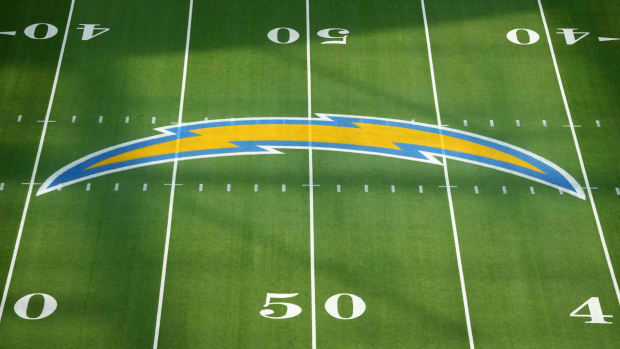Patriots release annotated version of Wells Report as rebuttal
The New England Patriots released a lengthy rebuttal to the Wells Report on Thursday, saying the report failed to provide proper context in its findings and did not fully account for the role "basic science" played in leading to the under-inflated footballs at the crux of the Deflategate controversy.
The Patriots presented the rebuttal titled "The Wells Report in Context" at WellsReportContext.com, where the full Wells Report was included with the Patriots' annotations to several excerpts of the report in bold. As a result of the Wells Report findings, quarterback Tom Brady was suspended four games without pay and the Patriots lost their first-round draft pick in 2016 and fourth-round draft pick in 2017.
"The conclusions of the Wells Report are, at best, incomplete, incorrect and lack context," the introduction to the Patriots rebuttal says. "The Report dismisses the scientific explanation for the natural loss of psi of the Patriots footballs by inexplicably rejecting the Referee’s recollection of what gauge he used in his pregame inspection. Texts acknowledged to be attempts at humor and exaggeration are nevertheless interpreted as a plot to improperly deflate footballs, even though none of them refer to any such plot. There is no evidence that Tom Brady preferred footballs that were lower than 12.5 psi and no evidence anyone even thought that he did. All the extensive evidence which contradicts how the texts are interpreted by the investigators is simply dismissed as 'not plausible.' Inconsistencies in logic and evidence are ignored."
• Patriots say 'deflator' refers to equipment worker's weight loss
The Patriots' annotations to the report are written by Daniel L. Goldberg, a senior partner at Morgan Lewis in Boston who represented the Patriots and "was present during all of the interviews of Patriots personnel conducted at Gillette Stadium."
In response to the Wells Report's conclusion that all 11 of the Patriots' game balls that were tested measured below the minimum pressure level for 12.5 pounds per square inch (psi), the Patriots said "this statement is not complete" without fully acknowledging the measurements of the Colts' game balls. The four Colts footballs tested each measured within the 12.5 to 13.5 psi range permitted under league rules on at least one of the gauges used for the tests, the Wells Report concluded.
The Patriots' rebuttal to that section of the Wells Report read, "The reality is that, on the second gauge, 3 of 4 Colts footballs were below regulation. A more accurate and complete statement regarding the Colts footballs would have been: 'Using two different gauges (one of which was used for pre-game psi measurements), the League tested only four Colts footballs at halftime. Three of those footballs measured below regulation on the so-called "non-Logo" gauge. Four measured at or above regulation on the so-called “Logo” gauge. One Colts football averaged below regulation when taking into account both gauges. As soon as that fourth Colts football was measured, League personnel stopped any further gauging of Colts footballs. Relying on the higher Logo gauge measurements of the Colts football, League officials decided not to add air to any of the Colts footballs. Additional measurements using the same two gauges were made post-game.'"
• SI's complete coverage of Deflategate investigation
After the game, the Patriots contended, "three of the four Colts footballs measured below 12.5 psi on the non-Logo gauge (a violation of League rules), one measured below 12.5 psi on both gauges (also a violation), and three Colts footballs measured above 12.5 on the Logo gauge."
The Patriots then presented one of their major rebuttals, describing "the most fundamental issue in this matter" written as, "DOES SCIENCE EXPLAIN THE LOSS OF PSI IN THE PATRIOTS FOOTBALLS?" The Patriots argued that considering the use of two gauges, the only "relevant" psi measurements are the ones from the gauge that was used before the game.
Referee Walt Anderson was alerted to psi issues before the game and later recalled using the "Logo" gauge that was, according to the Patriots, "consistently .3 to .45 psi higher in its measurements than the non-Logo gauge."
"The investigators did rely on those Logo gauge halftime psi numbers in dealing with the Colts footballs," the Patriots' annotation read. "Using that gauge, all the Colts footballs were within regulation. That justified the officials not adding air to them. However, when assessing the Patriots footballs, the investigators reject Anderson’s best recollection that he used the Logo gauge pre-game, and instead look to the larger psi drop that is shown by the lower psi, non-Logo gauge."
The Patriots then turned to "basic science" to acknowledge the Wells Report's lack of context, saying the "Ideal Gas Law," according to the NFL's consultants, established the PSI of the Patriots' footballs at halftime would have been between 11.32 to 11.52 "due solely to the temperature impact on the footballs."
"With the Logo gauge, 8 of the 11 Patriots footballs are in the Ideal Gas Law range and the average of all 11 Patriots footballs was 11.49 — fully consistent with the Ideal Gas Law’s prediction of exactly what that psi would be," the Patriots' annotation read. "THAT IS, RELYING ON MR. ANDERSON’S BEST RECOLLECTIONS, BASIC SCIENCE FULLY EXPLAINS THE DROP IN PSI OF THE PATRIOTS FOOTBALLS DURING THE FIRST HALF."
- Mike Fiammetta




































